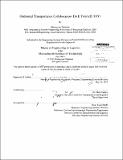| dc.contributor.advisor | Chris Caplice. | en_US |
| dc.contributor.author | Taherian, Homayoun | en_US |
| dc.contributor.other | Massachusetts Institute of Technology. Engineering Systems Division. | en_US |
| dc.date.accessioned | 2013-09-24T19:43:17Z | |
| dc.date.available | 2013-09-24T19:43:17Z | |
| dc.date.copyright | 2013 | en_US |
| dc.date.issued | 2013 | en_US |
| dc.identifier.uri | http://hdl.handle.net/1721.1/81107 | |
| dc.description | Thesis (M. Eng. in Logistics)--Massachusetts Institute of Technology, Engineering Systems Division, 2013. | en_US |
| dc.description | Cataloged from PDF version of thesis. | en_US |
| dc.description | Includes bibliographical references (p. 69-70). | en_US |
| dc.description.abstract | Continuous increases in transportation costs on one hand and companies' desire to reduce inventories and receiving costs on the other hand, have been forcing shippers to come up with innovative ways in tackling these two conflicting goals. One of these innovations is horizontal transportation collaboration. Horizontal transportation collaboration is the act of consolidation of shipments across several firms. This collaboration opens up the opportunity for companies to take advantage of the synergies that may exist in their supply chain networks. Such collaborations can be orchestrated through a 3PL or by the companies themselves via a Do-It- Yourself (DIY) approach. Collaboration can be active or passive. Active collaboration is when shippers plan their shipments with the goal of consolidation. Passive collaboration is purely opportunistic and takes advantage of synergies if and when they occur. The focus of this thesis is passive DIY collaboration. This research provides a practical guideline for companies who intend to engage in DIY collaboration with other firms. It addresses how to qualify potential collaboration partners, how to evaluate the associated savings, and finally, how to make it work. As a part of this thesis the actual data from six shippers were analyzed and the potential savings were calculated. The analysis included multi-stop truckload (MSTL) consolidation and pool point distribution. | en_US |
| dc.description.statementofresponsibility | by Homayoun Taherian. | en_US |
| dc.format.extent | 70 p. | en_US |
| dc.language.iso | eng | en_US |
| dc.publisher | Massachusetts Institute of Technology | en_US |
| dc.rights | M.I.T. theses are protected by
copyright. They may be viewed from this source for any purpose, but
reproduction or distribution in any format is prohibited without written
permission. See provided URL for inquiries about permission. | en_US |
| dc.rights.uri | http://dspace.mit.edu/handle/1721.1/7582 | en_US |
| dc.subject | Engineering Systems Division. | en_US |
| dc.title | Outbound transportation collaboration- Do It Yourself (DIY) | en_US |
| dc.type | Thesis | en_US |
| dc.description.degree | M.Eng.in Logistics | en_US |
| dc.contributor.department | Massachusetts Institute of Technology. Engineering Systems Division | |
| dc.identifier.oclc | 858278950 | en_US |
